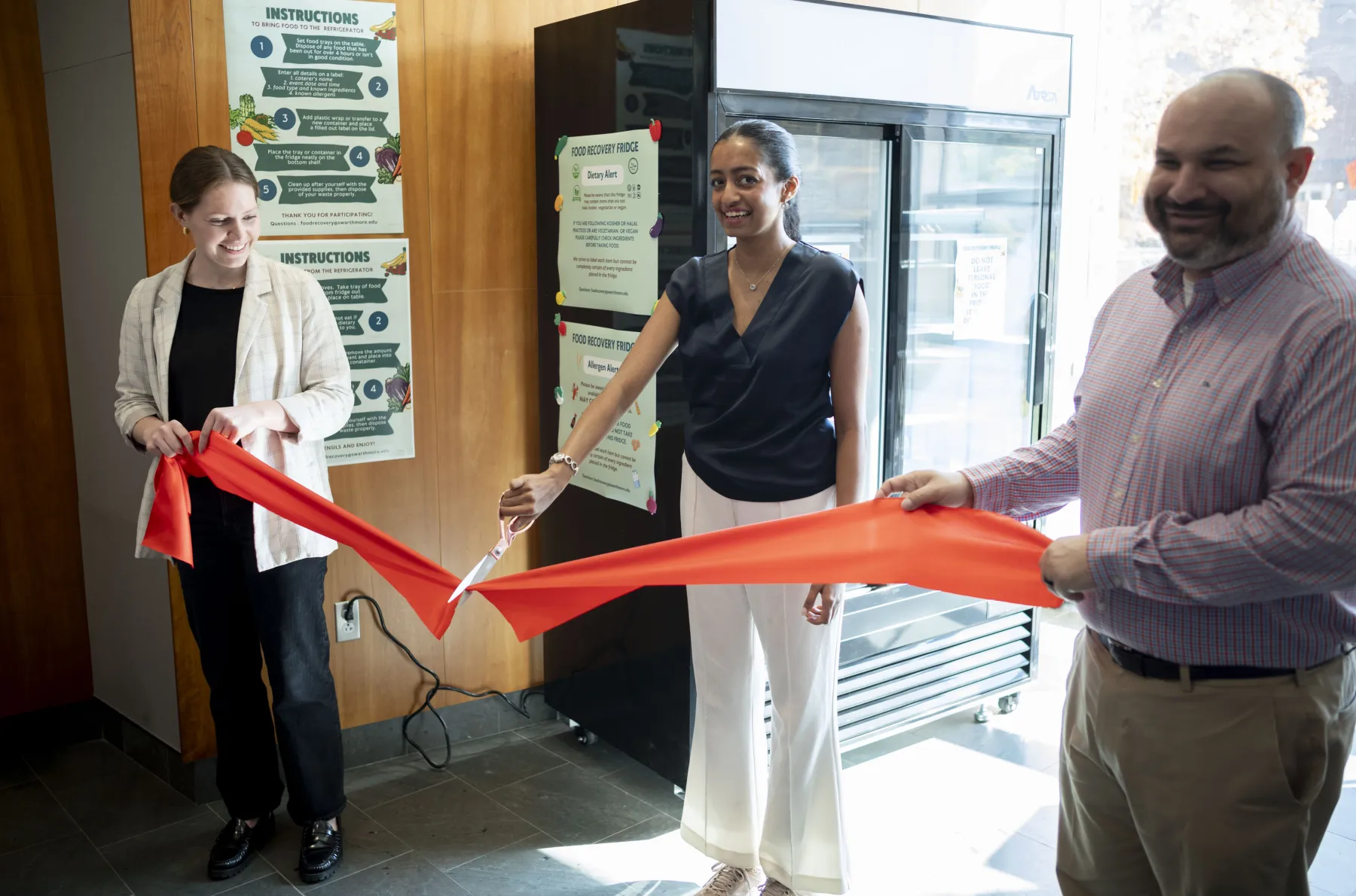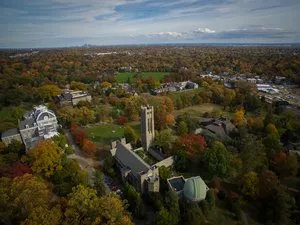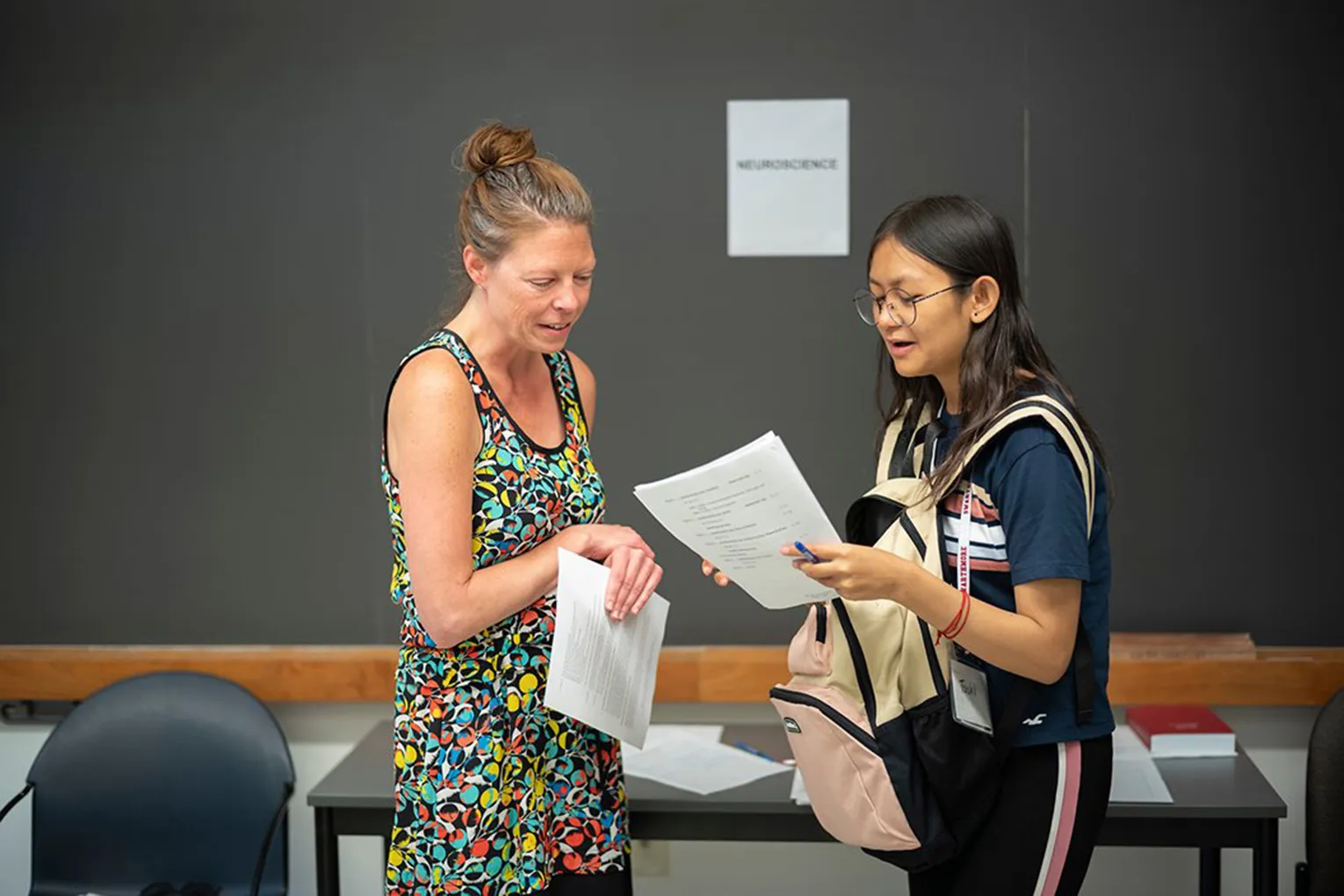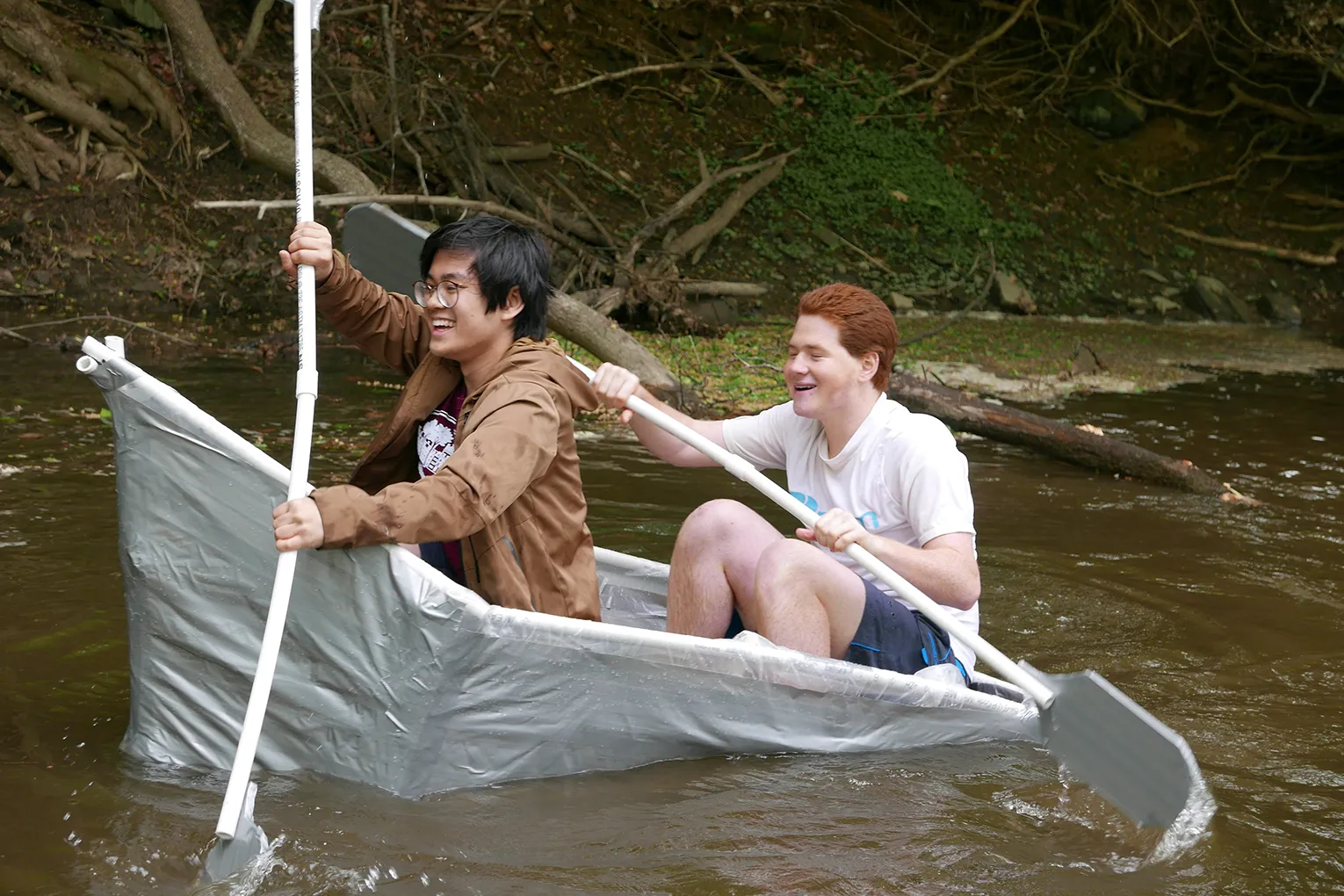- Dropping off food in the fridge after the event (for event organizers)
- Transferring Leftovers: If you have leftover food that is in good condition and safe to eat (i.e. has not been left out for more than 4 hours), bring it to the Food Recovery Fridge. There is a rolling cart near the fridge that you can use to move your food from the event to the fridge. If you are unable to transfer the food at the end of your event, sign up for the Food Recovery Fridge Liaison program here, forty-eight hours in advance, to receive support in moving food from your event to the fridge.
- From Tray to Fridge: If you are not able to leave the food in the original container or tray, use the trays or takeout containers located on the stand nearby and move food from its original serving dish to a new dish. Use the table to transfer items. If the tray needs a cover, please use plastic wrap to securely cover the food. For any aluminum containers, make sure the lid is secured. If you are bringing a boxed lunch or the food is already in a secure container, you do not need to transfer it to another tray. Please place the food in the fridge, but do not stack food unless there is limited room in the fridge. Remember to use gloves, tongs, and serving utensils while handling the food and to place dirty tongs and serving utensils in the dirty bin on the stand near the fridge.
- Labeling Your Food:Labels and writing utensils are located on the cart next to the fridge. Please fill out the following information:
- (1) Type of food (ex., donuts, veggie pasta, humus).
- (2) Known ingredients (including if there are any known allergens). If possible, label (v) for vegan, (veg) for vegetarian, and mark if Kosher or Halal.
- (3) Date and time of event (this is very important)
- (4) Dispose of by date (three days after you placed the food in the fridge)
- Clean-Up: If you spill any food during the process of transferring leftovers to the refrigerator , cleaning supplies are conveniently located near the fridge for your use. It is your responsibility to clean up after yourself. If you have a major spill or larger mess and need assistance, please email foodrecovery@swarthmore.edu to notify someone from the food recovery team of the situation. If you create any waste while utilizing the fridge, please place your waste into the appropriate waste streams. Food waste and compost products (takeout containers, wooden utensils, gloves) can all go into the compost. Aluminum can go into recycling, along with any #1, #2, or #5 packaging. Plastic wrap, black plastic, and other items should go into the trash.
- Taking food from the fridge (for fridge users)
- Removing Food From The Fridge: Put on gloves and take the food in a pan, tray, or other container out of the fridge. Place it on the table. Check the label for information about the food, including potential allergens. If you have any food allergies, are vegan, vegetarian, keep kosher, or halal, we can not ensure this fridge will be allergen-free or meet kosher and halal requirements. After removing the lid or plastic wrap, take the food and place it into a takeout container using tongs or serving utensils. You can grab a set of compostable utensils that are located on the stand near the fridge. Take as much food as you will eat, but be mindful to only take what you need. Practice good hygiene while taking food, using gloves and serving utensils. Place any dirty serving utensils or tongs in the dirty bin on the stand near the fridge.
- Returning Food To The Fridge: Once you've taken all the food you want, please securely cover the food with plastic wrap or make sure the lid of the container is on securely. If the food is now a much smaller amount, you can transfer it to a smaller tray or takeout container, located on the cart near the fridge. The tray should be re-wrapped, and the label should still be intact and readable. If not, please replace it with a new one. Place the tray back into the fridge so it will be available for the next person.
- Clean Up: If you spill any food during the process of transferring leftovers to the refrigerator, cleaning supplies are conveniently located near the fridge for your use. It is your responsibility to clean up after yourself. If you have a spill or create a larger mess and need assistance, please email foodrecovery@swarthmore.edu to notify someone from the food recovery team of the situation. If you create any waste while utilizing the fridge, please place your waste into the appropriate waste streams. Food waste and compost products (takeout containers, wooden utensils, gloves) can all go into the compost. Aluminum can go into recycling, along with any #1, #2, or #5 packaging. Plastic wrap, black plastic, and other items should go into the trash.
- Judgment and Risk: Use your best judgment when taking food. By participating in the program, you are accepting the risks associated with consuming leftover food. These instructions indicate that no food placed in the fridge should be left outside for more than four hours, and no food should be left in the fridge over three days. If any food is unlabeled, please do not eat it. The items in this fridge may not meet the needs of those who have food allergies or need vegan, vegetarian, Kosher, or Halal foods. Please keep this in mind when selecting food from the fridge to eat.
- Maintenance and Safety Protocols
The Dining Services team, led by Tim Smith, will maintain the fridge, along with two Green Advisors and Office of Sustainability staff. The fridge will be cleaned daily, and any old food will be disposed of to ensure safety and cleanliness. The refrigerator and its contents will be monitored according to the FDA guidelines and the PA Food Code to maintain high standards of food safety. All staff working on this initiative will receive ServSafe training led by Chef Thomas Ramsey of the Dining Services team.
- Food Recovery Fridge Liaison Program
Starting in the spring of 2025, the Office of Sustainability and Dining Services piloted a new program for the Food Recovery Fridge to collect more leftover food after events. Recognizing that students and staff may not have time to bring food to the refrigerator, we are now offering Food Recovery Fridge Liaisons to help collect food from events and transport it to the fridge. Moving forward, if you know you cannot bring leftover food to the fridge after an event, please sign up using the Food Recovery Fridge Liaison Request Form to have a liaison stop by at the event's conclusion, pick up the leftovers, and bring them to the fridge. The form must be filled out forty-eight hours in advance of your event; otherwise, we will not be able to match your event with an available liaison. After we receive your request and have matched a liaison to your event, we will send you a confirmation email. We can not guarantee that someone will be available to collect food after the event, but we will do our best to find an available liaison.
Please reach out to Tim Smith, Retail Manager, and Clare Hyre, Associate Director of Sustainability, at foodrecovery@swarthmore.edu with any questions.
Food Recovery Fridge

Ribbon cutting at Food Recovery Fridge launch in October, 2025.
The Food Recovery Fridge is an initiative designed to help us achieve our commitment to zero waste by 2035. The project was begun in the 2023-2024 academic year by President’s Sustainability Research Fellow Saumya Raj ’25 and Associate Director of Sustainability Clare Hyre. The idea was born from a critical observation: leftover food from catered events often goes to waste. By introducing a designated refrigerator located in the lobby outside Science Center Room 199, the program aims to bridge this gap, enabling the safe collection and redistribution of unused, edible food from events. This initiative addresses food waste from events and fosters a broader cultural shift towards sustainability and resourcefulness within the College community.



